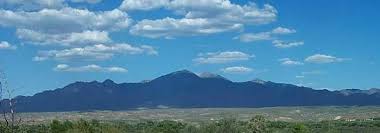A quartet of conservation groups filed a lawsuit earlier this week challenging the Forest Service’s approval of a massive open-pit copper mine in the Santa Rita Mountains of southern Arizona.
The lawsuit alleges the Forest Service violated at least 10 environmental laws in approving the Rosemont Mine earlier this year. They say the mine will degrade sensitive watersheds and will result in a mile-wide pit filled with pollution-laced water.
Coronado National Forest officials say their hands are tied by federal laws, including the General Mining Act of 1872, that require agencies to accommodate mining on public lands.
The mine’s opponents contend that the Forest Service has plenty of leeway to deny the mine given that it would violate other laws designed to protect water quality and rare species. The mine would degrade habitat critical for the survival of jaguars, which are protected under the Endangered Species Act.
“The Rosemont mine would permanently destroy endangered species habitat and pollute some of Arizona’s most important waterways,” said Marc Fink, a senior attorney with the Center for Biological Diversity, in a statement. “The Forest Service should be working to protect rivers, streams and wildlife in the Coronado National Forest, not greenlighting this destructive project.”
Other groups participating in the lawsuit include Save the Scenic Santa Ritas, the Arizona Mining Reform Coalition and the Sierra Club’s Grand Canyon chapter.
Toronto-based Hudbay Minerals Inc. wants to build the mine on more than 5,400 acres in the Santa Rita Mountains south of Tucson. More than half of that—3,653 acres—would be located on the Coronado National Forest.
The lawsuit alleges that the mine would reduce the amount of water flowing in streams in the area and would permanently alter the hydrology of the Santa Ritas. The mine would also degrade Davidson Canyon, opponents say, which state regulators have designated an “outstanding Arizona water.”
The plan approved by the Forest Service calls for Hudbay to dig a pit that would cover 955 acres. The company expects to extract nearly 6 billion pounds of copper over the mine’s 20- to 25-year lifespan, as well as 194 pounds of molybdenum and 80 million ounces of silver.
After the mine is decommissioned, the pit would fill with water more than 1,000 feet deep. The Forest Service acknowledges that the water would be tainted by pollutants. The agency’s final environmental impact statement for the project says that “the mine pit lake water quality could exceed standards for cadmium, lead, copper, mercury, selenium, and zinc.”
In September, the Center for Biological Diversity filed a separate lawsuit challenging a U.S. Fish and Wildlife Service document regarding the mine’s impact on jaguars. That “biological opinion” cleared the way for the Forest Service’s approval of the mine.
Hudbay Minerals must also secure a permit from the U.S. Army Corps of Engineers before it can proceed with the mine. The Corps’ San Francisco division is reviewing the proposal after lower-level Corps officials recommended that the permit be denied.


